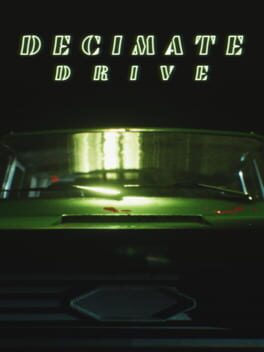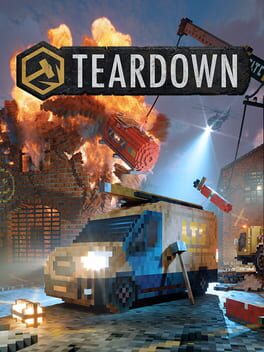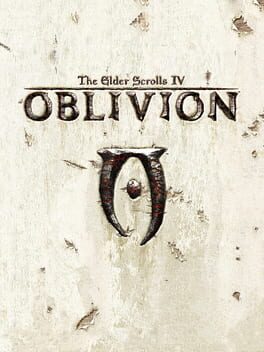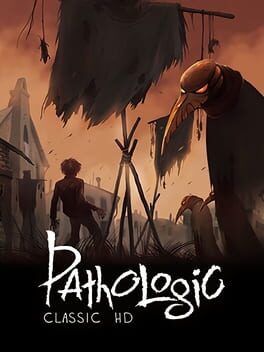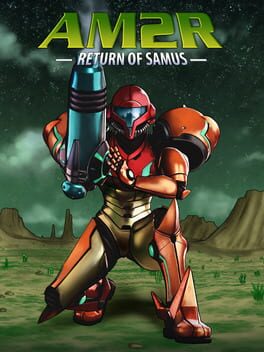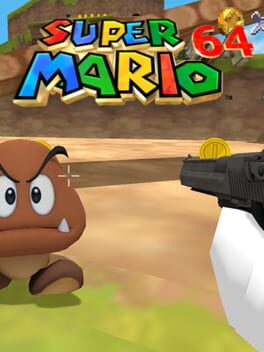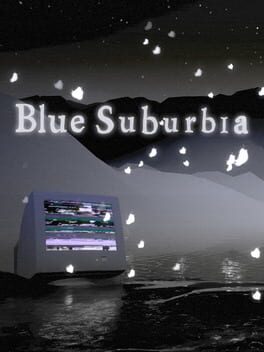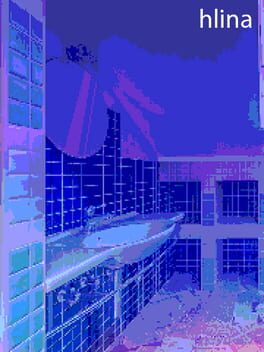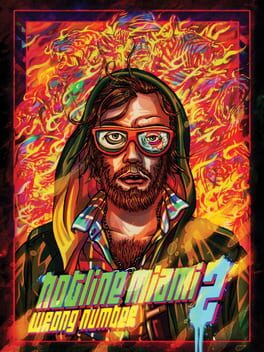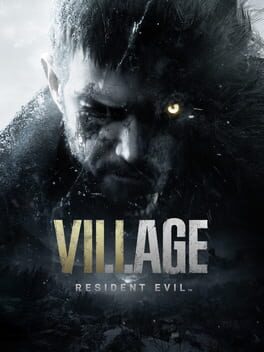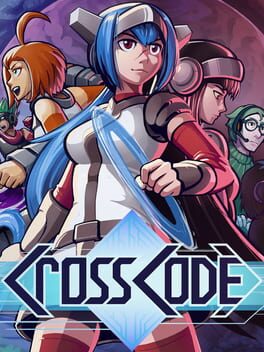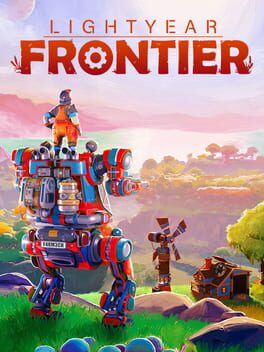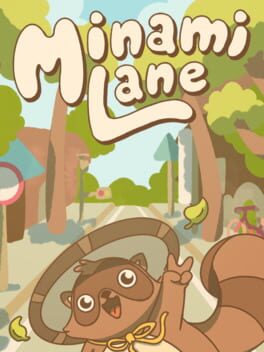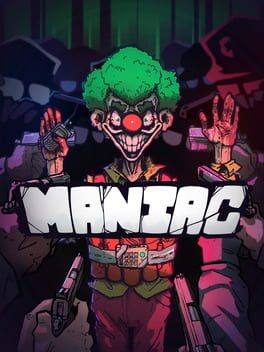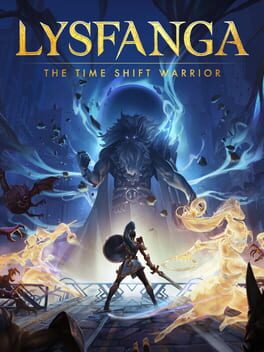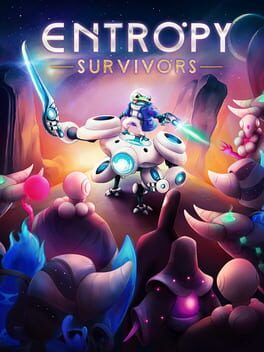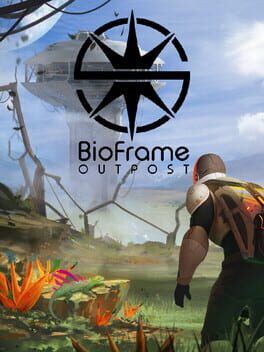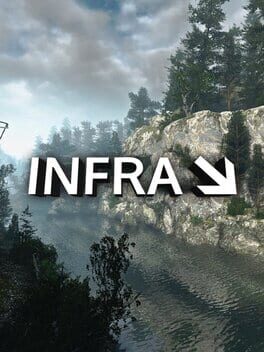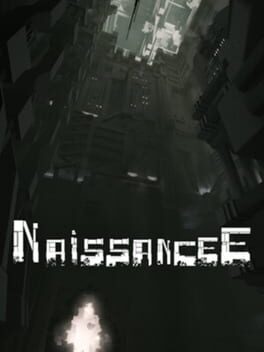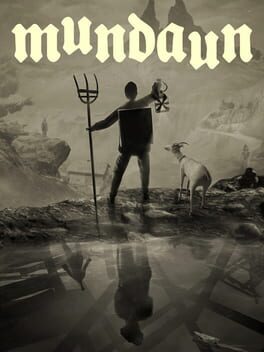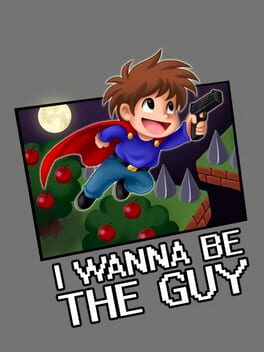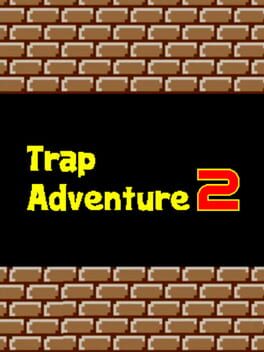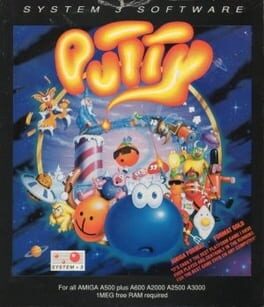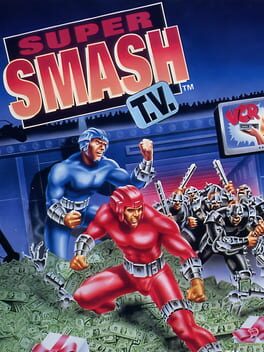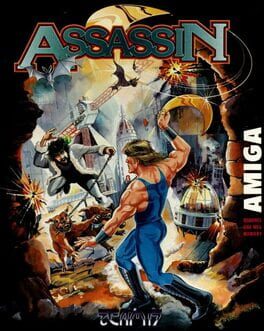fancyynancyy
1203 reviews liked by fancyynancyy
PowerWash Simulator
2021
A 3D coloring book with the least functional multiplayer I’ve ever experienced in a video game.
The basic gameplay loop of Powerwash Sim is more fun and relaxing than I thought it would be. It’s a pretty zen and satisfying experience to clean a bunch of dirt off stuff. This experience would be made even better by doing it with friends, yet I cannot think of a better multiplayer game that is so uninterested in being a multiplayer game.
I have never, in my life, played a video game with such poorly made or optimized multiplayer as the multiplayer in Powerwash Simulator. I was floored with how bad it is. Firstly, progress is only tracked for the host. So if you’re hoping to play through the campaign with a friend, you’ll have to accept that you won’t unlock anything or progress your own game. The game is built as a single player experience first.
Let’s say you do decide to do one of the bonus missions with a group of friends. Good luck getting the gang together. It took us 30 minutes just to get all 4 of us into one game thanks to frequent connection issues coupled with offensively long loading screens. Once you do get in the game together, prepare to deal with obscene lag and sync issues. Throughout the game, you and your friends’ games will slowly get more and more out-of-sync. In their game, they’d see us cleaning a spot that we cleaned 15-20 minutes prior. By the end of our mission, my friends were over 25 minutes behind my game. I got the “Mission Complete” screen and we sat there for 20 minutes waiting for their games to catch up before getting bored and quitting.
This feels maybe nitpicky, but it would be cool if the game actually had some physics to it other than the water and dirt physics. I was a bit disappointed to find that the entire environment is basically a rendered static space. Anything you might expect would move like flowers, grass, windmills, etc, doesn’t. It’s a 3D coloring book and nothing more.
To add insult to injury, they keep dropping new content for the game while ignoring the issues that have been plaguing the game since launch. There are Reddit posts that are 2 years old complaining about the same issues we’re experiencing now. Fix your broken-ass game before adding Spongebob Squarepants to it.
If you want a game to play alone while you listen to a podcast or zone out, I’m sure Powerwash Simulator will do just fine, but I was pretty disappointed with how poorly-made the game was overall. It would be such a cool multiplayer experience to hang and clean with friends. Sadly, the multiplayer is genuinely the worst-made multiplayer I’ve ever experienced in a video game both in functionality and in optimization.
+ Cleaning can feel satisfying I guess
+ Probably a good podcast game or something
- Environments are static and lack any physics. It’s basically a 3D coloring book
- The most poorly-made, poorly-optimized multiplayer of all time. Don’t even bother
- UI controls on console are quite bad
- Can get tedious
- Finding the last 1% to finish a level or trying to find the tiniest dirt spec on a small part sucks
- Devs keep dropping new content while ignoring the bugs plaguing the game
The basic gameplay loop of Powerwash Sim is more fun and relaxing than I thought it would be. It’s a pretty zen and satisfying experience to clean a bunch of dirt off stuff. This experience would be made even better by doing it with friends, yet I cannot think of a better multiplayer game that is so uninterested in being a multiplayer game.
I have never, in my life, played a video game with such poorly made or optimized multiplayer as the multiplayer in Powerwash Simulator. I was floored with how bad it is. Firstly, progress is only tracked for the host. So if you’re hoping to play through the campaign with a friend, you’ll have to accept that you won’t unlock anything or progress your own game. The game is built as a single player experience first.
Let’s say you do decide to do one of the bonus missions with a group of friends. Good luck getting the gang together. It took us 30 minutes just to get all 4 of us into one game thanks to frequent connection issues coupled with offensively long loading screens. Once you do get in the game together, prepare to deal with obscene lag and sync issues. Throughout the game, you and your friends’ games will slowly get more and more out-of-sync. In their game, they’d see us cleaning a spot that we cleaned 15-20 minutes prior. By the end of our mission, my friends were over 25 minutes behind my game. I got the “Mission Complete” screen and we sat there for 20 minutes waiting for their games to catch up before getting bored and quitting.
This feels maybe nitpicky, but it would be cool if the game actually had some physics to it other than the water and dirt physics. I was a bit disappointed to find that the entire environment is basically a rendered static space. Anything you might expect would move like flowers, grass, windmills, etc, doesn’t. It’s a 3D coloring book and nothing more.
To add insult to injury, they keep dropping new content for the game while ignoring the issues that have been plaguing the game since launch. There are Reddit posts that are 2 years old complaining about the same issues we’re experiencing now. Fix your broken-ass game before adding Spongebob Squarepants to it.
If you want a game to play alone while you listen to a podcast or zone out, I’m sure Powerwash Simulator will do just fine, but I was pretty disappointed with how poorly-made the game was overall. It would be such a cool multiplayer experience to hang and clean with friends. Sadly, the multiplayer is genuinely the worst-made multiplayer I’ve ever experienced in a video game both in functionality and in optimization.
+ Cleaning can feel satisfying I guess
+ Probably a good podcast game or something
- Environments are static and lack any physics. It’s basically a 3D coloring book
- The most poorly-made, poorly-optimized multiplayer of all time. Don’t even bother
- UI controls on console are quite bad
- Can get tedious
- Finding the last 1% to finish a level or trying to find the tiniest dirt spec on a small part sucks
- Devs keep dropping new content while ignoring the bugs plaguing the game
Kirby's Dream Land
1992
Just pure, simple good fun shit. I beat this for the first time while sitting on the toilet in about 30 mins (in one sitting) .
Being the first Kirby game and being the only mainline game without his iconic copy ability, it essentially feels like a Kirby's Adventure beta. Yet despite not having his copy ability, it's still a lot of fun to play through and makes bosses actually have some challenge and methodology as you need to wait for opportunities to attack, as opposed to spamming your best copy attacks. It makes me want to do no-copy runs of other Kirby games for that same challenge.
Good shit. Simple shit. Fun shit. Has aged gracefully and is still an excellent 2D platformer.
Being the first Kirby game and being the only mainline game without his iconic copy ability, it essentially feels like a Kirby's Adventure beta. Yet despite not having his copy ability, it's still a lot of fun to play through and makes bosses actually have some challenge and methodology as you need to wait for opportunities to attack, as opposed to spamming your best copy attacks. It makes me want to do no-copy runs of other Kirby games for that same challenge.
Good shit. Simple shit. Fun shit. Has aged gracefully and is still an excellent 2D platformer.
Decimate Drive
2023
If you don't want any spoilers, give Decimate Drive ten minutes of your time and then come back.
It is well worth it if you are poor and seek an asynchronous micro- thrill and joy which is best experienced blind.
The slow set-up also proved utterly genius in such a short game, to let that single trick it pulls on the player carry more weight, while setting the intended mood for that otherwise admittedly goofy Idea.
I witnessed a constant emotinal flux inside of me, rushing from short burst of terror to dopamine high giggling, all predicated on the tension of a restless motor engine wanting to hurt me.
While I was running for my Player Character's life I felt some genuine frights, not horror mind you, rather a contemporary but primal fear to not get crushed by tonnes of fast-moving steel.
This was only made possible by its short length, the almost innate uncertainty we have all experienced while trying to cross a street and can't make out if a car, heading directly at one will hit the breaks in time and the game's promise to twist this uncertainty into vehicular manslaughter.
I believe if it was any longer with more scenarios then the routinised gaminess revealing itself would turn that fear of getting bulldozered by a faceless machine too much into a fear of not touching a hitbox, which sets you back to the start of the level.
That game you play with the cars you flee from is just an asymmetrical live or death version of "catch".
It could be boiled down to a couple things.
First of, just listening for the automobile or a driving bassline shouting from its stereo.
Breaking the open parallel from the player to it with a street pole to stop that vehicle aiming straight at you dead in its tracks.
At least for as long as the A.I. takes to reverse back out of it again.
Or a Corrida de Toros like dance in which the player utilises timed strafing, sudden directional changes and maybe even outplays the car by looking directly at it, while calculating its trajectory or they deliberatly bait it into a corner to win more time.
Moving around the Player Character will run, or rather jog, automatically.
One silly jank I found as I was playing is that the walk/run toggle button won't function a second time after you switched to walking.
The very indie game dev solution for this problem was to hit the jump button.
There was no other real use for the existence of this jump button, so after finding this kinda funny bug I choose to deduct that the dev only left the jump button in this game, aside from that little extra feel of "better movement options", or immersion or some shit, to reset the Player Character to their default running speed.
Why there was even the option to walk could be questioned, but I would claim it also aids the deception the game pulls on the player with its slow and deliberate, atmospheric start.
I also liked that the first few minutes subconsciously train the player to understand that their only goal is the red glowing door,
like if that wasn't obvious to them already, but still there is zero tutorialisation, only mood setting and tension building and I enjoyed that holistic approach.
Yea, this little itch project was pretty fascinating, if I hadn't played Homebody a couple days ago and would still care to think about that kind of stuff I might've called this my favourite horror game of the year.
(This might just be a sly attempt to shout-out Homebody lol, a game, horror and puzzle fans should def check out, although I probably wont write about it, cause @BeauTartep already did the definitive dissertation, but spoiler warning)
I mean, I have been writing this now for longer than it took me to play the game. That is the equivalent of an automatic recommendation in my book.
One minor nitpick I have is that I think the death screen and sounds leading into it could have hit harder, in a literal sense.
Shit could have been an ounce more visceral.
Itch.io Horror games are weird and I am kind of obssesed with them lately. There is so much good stuff to find behind all the jank and between the overstaturation of backroom games. lol
What I learned from this game is that it can be possible to find thrills and tension inside a concept that might just seem completly silly on paper, at least if you pace it with intention and restraint and know how to set the proper atmosphere for it.
And that vehicular manslaughter is kinda not based. Miss me w that shit pls.
It is well worth it if you are poor and seek an asynchronous micro- thrill and joy which is best experienced blind.
The slow set-up also proved utterly genius in such a short game, to let that single trick it pulls on the player carry more weight, while setting the intended mood for that otherwise admittedly goofy Idea.
I witnessed a constant emotinal flux inside of me, rushing from short burst of terror to dopamine high giggling, all predicated on the tension of a restless motor engine wanting to hurt me.
While I was running for my Player Character's life I felt some genuine frights, not horror mind you, rather a contemporary but primal fear to not get crushed by tonnes of fast-moving steel.
This was only made possible by its short length, the almost innate uncertainty we have all experienced while trying to cross a street and can't make out if a car, heading directly at one will hit the breaks in time and the game's promise to twist this uncertainty into vehicular manslaughter.
I believe if it was any longer with more scenarios then the routinised gaminess revealing itself would turn that fear of getting bulldozered by a faceless machine too much into a fear of not touching a hitbox, which sets you back to the start of the level.
That game you play with the cars you flee from is just an asymmetrical live or death version of "catch".
It could be boiled down to a couple things.
First of, just listening for the automobile or a driving bassline shouting from its stereo.
Breaking the open parallel from the player to it with a street pole to stop that vehicle aiming straight at you dead in its tracks.
At least for as long as the A.I. takes to reverse back out of it again.
Or a Corrida de Toros like dance in which the player utilises timed strafing, sudden directional changes and maybe even outplays the car by looking directly at it, while calculating its trajectory or they deliberatly bait it into a corner to win more time.
Moving around the Player Character will run, or rather jog, automatically.
One silly jank I found as I was playing is that the walk/run toggle button won't function a second time after you switched to walking.
The very indie game dev solution for this problem was to hit the jump button.
There was no other real use for the existence of this jump button, so after finding this kinda funny bug I choose to deduct that the dev only left the jump button in this game, aside from that little extra feel of "better movement options", or immersion or some shit, to reset the Player Character to their default running speed.
Why there was even the option to walk could be questioned, but I would claim it also aids the deception the game pulls on the player with its slow and deliberate, atmospheric start.
I also liked that the first few minutes subconsciously train the player to understand that their only goal is the red glowing door,
like if that wasn't obvious to them already, but still there is zero tutorialisation, only mood setting and tension building and I enjoyed that holistic approach.
Yea, this little itch project was pretty fascinating, if I hadn't played Homebody a couple days ago and would still care to think about that kind of stuff I might've called this my favourite horror game of the year.
(This might just be a sly attempt to shout-out Homebody lol, a game, horror and puzzle fans should def check out, although I probably wont write about it, cause @BeauTartep already did the definitive dissertation, but spoiler warning)
I mean, I have been writing this now for longer than it took me to play the game. That is the equivalent of an automatic recommendation in my book.
One minor nitpick I have is that I think the death screen and sounds leading into it could have hit harder, in a literal sense.
Shit could have been an ounce more visceral.
Itch.io Horror games are weird and I am kind of obssesed with them lately. There is so much good stuff to find behind all the jank and between the overstaturation of backroom games. lol
What I learned from this game is that it can be possible to find thrills and tension inside a concept that might just seem completly silly on paper, at least if you pace it with intention and restraint and know how to set the proper atmosphere for it.
And that vehicular manslaughter is kinda not based. Miss me w that shit pls.
Nocturnal
2023
Fugue in Void
2018
Fugue In Void has a few interesting ideas, but ends up yet another extremely self-indulgent walking simulator that is shockingly bereft of substance. Where other, better examples of the genre have interesting things to say and things to show, this game simply insists on its profundity while never doing anything that warrants it.
4 / 10
.
.
.
.
.
.
.
.
.
.
.
So, this is a weird one. Typically, when I review games on this platform, no matter how good or bad or inconsistent, they are still games. They have a beginning and end, goals, missions, enemies, etc. No matter how god or bad, I’m still able to criticise something on those merits. With Fugue In Void, it’s different. This is not a game. Or, at least, I don’t think it’s trying to be one. At most, it could be considered a so called “art house game”. But really, it’s more of an ““interactive”” art / architecture installation, although that part might be debatable too. So why do I feel the need to review this? Well, for one, sometimes I do enjoy a good walking-simulator / indie-avantgarde-lookatmeiamsosmart pseudo-game if it has something interesting going on. You know, stuff like Proteus, The Beginner’s Guide, Kairo, Mirrormoon EP, etc. So it’s not like I completely lack the framework of talking about something like this. Second - and really, most importantly - this “game” costs 6 whole, real life, human dollars on Steam. That is pretty wild, considering that most of the pieces in this genre tend to be either free-to-play or extremely cheap, and also considering that FIV does have some performance issues as well.
Since this game isn’t even an hour long, I’ll try to be as brief as possible, since I don’t wanna talk longer about a game than it took me to beat it [EDIT: well, that didn’t work lol], so I’ll cut to the chase. It’s extremely obvious that FIV takes heavy inspiration from one game in particular, and that is NaissanceE. Made by Spanish developer Mavros Sedeño in 2014, NaissanceE is a walking-simulator / first-person platformer set inside a colossal megastructure, itself deeply influenced by Tsutomu Nihei’s 1998 manga “BLAME!”, and is one of my favourite games ever made - not because of any amazing design elements or particularly crazy ideas, more than it has a specific idea about an experience it wants to deliver and does so damn near flawlessly. It is a game fundamentally built on the idea of the purpose of architecture, the feeling of being dwarfed by structures built BY humans but not FOR them. It’s about navigating the dream-like spaces of the near-infinite, about taking the abstract concepts of BLAME! and infusing them with meaning by turning them into gameplay elements. FIV on the other hand, feels like it doesn’t even really know what it tries to go for.
I want to quickly point out the things I did like about it. The architecture on display is fairly impressive and I especially enjoyed the abstract, experimental drone-heavy soundtrack. There are some moments which manage to elicit the same kind of beautiful alienation you’d experience with its role model, NaissanceE, although sadly this happens more on the latter’s back, rather than through the unique merits of FIV. The visual language that’s being used feels very cryptic and interesting, and I like how much the visuals of this game play with texture and plasticity. The atmosphere is, overall, sufficient. But that’s pretty much it. With a game this short, I’m struggling to find more to talk about.
So, before I we get more into it, I have to criticise how terrible accessibility has been handled here. I have seen very few games with so little regard for it. First off, considering the amount of bright, flashing lights used here, the fact that there is no epilepsy warning whatsoever strikes me as very irresponsible. Second, while understand the decision to not include a save system in this game - since it’s meant to be a thing you experience in one sitting - I do NOT understand the complete lack of any pause option. I’m sorry dev, but the experience your “game” provides is not worth letting my pizza burn in the oven or letting the postman leave with my package because I couldn’t open the door. It’s not like it serves any particular gameplay purpose or anything, it really seems like this is simply the dev’s method of forcing you to stay in front of the computer for the whole duration. What’s worse though, is the fact that this decision comes with the added side effect that you can’t change ANY settings in the game whatsoever. None. Nothing. You can’t chose performance mode, you can’t change the FOV, lighting, mouse acceleration, key binds, you can’t even turn off (or even reduce) the fucking motion blur, which is a cardinal sin for me personally, since I get severe headaches from it. The ONLY thing you’re allowed to change is the resolution, and that’s only on the launcher that pops up before the game starts. Honestly, I’m not even sure how to even properly quit the game, I had to use the Task Manager to simply close the program. The launcher even features 2 entirely fake options, one being “graphical quality”, with precisely one option to chose, namely “fancy”. (which, I assume includes the motion blur)
So, finally, onto the actual ”game”. Starting with a 10-minute long, uninterruptible AND unskippable cutscene (I guess “abstract imagery in video form” is more accurate) when the entire experience isn’t even an hour long is certainly one hell of a move. One could even describe it as “radical” - but only if one were to misunderstand the meaning of the word. The animations are certainly beautiful, and the use of different textures and surfaces is interesting. In terms of abstract / applied art, or viewed as a virtual gallery / art exhibition it may or may not challenge our perception of how these things might work; however with a game, this approach strikes me as deeply regressive and antithetical to what is truly avant-garde within the field of game design. Interactivity is to me the core, the beating heart of what actually differentiates games as art from other media. That is not to say that all games have to work the same way, or even feature traditional gameplay. Again, I have a massive soft spot for more abstract experiences like this, from tiny indie games like Proteus, Babbdi and of course NaissanceE, to massive AAA experiences like Death Stranding. I love radical, abstract games that challenge what the medium is even capable of. This is not it. This is essentially an architectural exhibition masquerading as a video game, and that would be fine if it would at least commit to it.
Structurally, FIV simply leads you through a couple of short walking-sections, interspersed with longer sections (at least they FEEL a lot longer) in which you can’t move and are forced to watch the infuriatingly slow-moving animations of shadows and light moving across the screen. Similarly, the character’s movement speed is agonisingly sluggish. There is a sprint option, but it feels like what the default walking speed ought to have been. I will never understand why devs in this genre insist upon turtle-speed being the definitive experience. What’s worse is that the walking sections are on a timer, meaning if you DO find yourself in the position where you want to stop and stare just a little longer - which seems like its entire raison d’être - you better not take too long. The game this reminds me the most of is Awkward Dimensions Redux, and seeing how that one may just take the title for “the worst game I have ever played” this comparison truly does it no favours what so ever. It’s even down to both apparently having been “inspired by [the dev’s] dreams” and both having zero interest in your role as the player. To them, you as the player exist merely to experience THEIR vision. YOU are only here to enjoy whatever THEY dictate your experience to be. For me good art - doubly so when it comes to games - is, to me, a conversation. A back and forth between artist and beholder, dev and player, etc. The artist creates a work, and the beholder imbues it with meaning. Much like Awkward Dimensions Redux, this game feels more like someone strapping you to a chair and making you watch their holiday pictures. This feeling only worsens when you realise that there are invisible walls everywhere, including the sides of stairs and even the smallest ledges so there’s absolutely no way you’re not going through this thing in the exact manner the dev intended. It’s as if the game actively fights you on every step when trying to participate in the experience, trying to make it your own.
I wish I could at least compliment the game on its aesthetic and the feeling that the colossal, brutalist architecture commends, but that would be very disingenuous, since its visual identity does draw so heavily from NaissanceE it feels like I’m actually complementing THAT game. Even its visually most impressive moment - a short section where you walk through a colourful desert with a humongous structure looming over your head - is taken straight out of NaissanceE, except that game did it so much better, letting you take your time and really reflect on what you’re experiencing in this moment, something Fugue In Void seems to be hellbent on preventing.
From a look at Moshe Linke’s (the dev) homepage, it seems that he specialises in these architecture-based walking simulators, making me think that perhaps he has a background in that field. That is perfectly fine, and please do not understand this as me saying that all games need to follow similar formulas or can’t get weird with their structure. I LOVE when games get weird and experimental. It’s one particular phrase from Linke’s website that really irks me in the context of this game. He states that his work is “A fusion between art and games”; and THAT is precisely the problem. Games already ARE art. Games do not need to be “fused with art”. The very concept of interactivity, and games’ ability to enter a direct conversation with their beholder imbue them with a power completely alien to other media. And this is precisely what strikes me as pretentious; that Linke - and many other developers within this subcategory - seems to think that his curtailing of video games’ unique abilities and strengths by attempting to approximate the experience of a virtual art gallery in the same way that mid-2000’s AAA developers sought to make gaming more “cinematic” by spending all of their budget on creating as many, overly long cutscenes as possible. Games do not need to be “like other media”.
Now, my tone here may strike you as harsh, but I feel like that, if you’re out here asking for 6$ for your highly avant-garde virtual architecture installation / dream journal, when there are plenty of similar experiences out there that are way more interesting, offer way more in terms of deconstructing the concept of gaming, are way more interested in your actions and feelings and also typically cost no money (or at least, way less) then I feel like you really ought to have something to offer that warrants that price. I’ve played plenty of shitty walking simulators made by people that enjoy the smell of their own farts and I rarely feel like I have to call them out.
Ultimately, rating this game is very difficult. I did enjoy the music and the imagery, which is the bulk of the experience, but I really dislike almost everything else. I wouldn’t say I hated the experience as such - it’s way too short for it to warrant active hate - and I think that in the context of an actual art installation, where, for example, all of these levels were individual things you could pick from a list, wearing a VR headset in a large atelier or studio or museum or whatever, might’ve been really interesting. But I simply think that - IF you are going to put your work on Steam - this type of experience must accommodate the fact that they are meant to be played at home. After work. After being done with your day, when you just want to turn on your PC and play something fun or interesting. And that’s not impossible. NaissanceE managed. Dear Esther, Gone Home, Yume Nikki, Scanner Sombre, Journey, etc, all of them managed. And yes, these games all attempt to work as games much more than Fugue in Void does, but they are also aware that they are, at the end of the day, also consumer products, and if you expect the same amount or even MORE money than the games mentioned above, you should expect the same level of scrutiny. Here’s hoping that Linke can make “Neon Entropy” into something more interesting, whenever it’ll be finished.
4 / 10
4 / 10
.
.
.
.
.
.
.
.
.
.
.
So, this is a weird one. Typically, when I review games on this platform, no matter how good or bad or inconsistent, they are still games. They have a beginning and end, goals, missions, enemies, etc. No matter how god or bad, I’m still able to criticise something on those merits. With Fugue In Void, it’s different. This is not a game. Or, at least, I don’t think it’s trying to be one. At most, it could be considered a so called “art house game”. But really, it’s more of an ““interactive”” art / architecture installation, although that part might be debatable too. So why do I feel the need to review this? Well, for one, sometimes I do enjoy a good walking-simulator / indie-avantgarde-lookatmeiamsosmart pseudo-game if it has something interesting going on. You know, stuff like Proteus, The Beginner’s Guide, Kairo, Mirrormoon EP, etc. So it’s not like I completely lack the framework of talking about something like this. Second - and really, most importantly - this “game” costs 6 whole, real life, human dollars on Steam. That is pretty wild, considering that most of the pieces in this genre tend to be either free-to-play or extremely cheap, and also considering that FIV does have some performance issues as well.
Since this game isn’t even an hour long, I’ll try to be as brief as possible, since I don’t wanna talk longer about a game than it took me to beat it [EDIT: well, that didn’t work lol], so I’ll cut to the chase. It’s extremely obvious that FIV takes heavy inspiration from one game in particular, and that is NaissanceE. Made by Spanish developer Mavros Sedeño in 2014, NaissanceE is a walking-simulator / first-person platformer set inside a colossal megastructure, itself deeply influenced by Tsutomu Nihei’s 1998 manga “BLAME!”, and is one of my favourite games ever made - not because of any amazing design elements or particularly crazy ideas, more than it has a specific idea about an experience it wants to deliver and does so damn near flawlessly. It is a game fundamentally built on the idea of the purpose of architecture, the feeling of being dwarfed by structures built BY humans but not FOR them. It’s about navigating the dream-like spaces of the near-infinite, about taking the abstract concepts of BLAME! and infusing them with meaning by turning them into gameplay elements. FIV on the other hand, feels like it doesn’t even really know what it tries to go for.
I want to quickly point out the things I did like about it. The architecture on display is fairly impressive and I especially enjoyed the abstract, experimental drone-heavy soundtrack. There are some moments which manage to elicit the same kind of beautiful alienation you’d experience with its role model, NaissanceE, although sadly this happens more on the latter’s back, rather than through the unique merits of FIV. The visual language that’s being used feels very cryptic and interesting, and I like how much the visuals of this game play with texture and plasticity. The atmosphere is, overall, sufficient. But that’s pretty much it. With a game this short, I’m struggling to find more to talk about.
So, before I we get more into it, I have to criticise how terrible accessibility has been handled here. I have seen very few games with so little regard for it. First off, considering the amount of bright, flashing lights used here, the fact that there is no epilepsy warning whatsoever strikes me as very irresponsible. Second, while understand the decision to not include a save system in this game - since it’s meant to be a thing you experience in one sitting - I do NOT understand the complete lack of any pause option. I’m sorry dev, but the experience your “game” provides is not worth letting my pizza burn in the oven or letting the postman leave with my package because I couldn’t open the door. It’s not like it serves any particular gameplay purpose or anything, it really seems like this is simply the dev’s method of forcing you to stay in front of the computer for the whole duration. What’s worse though, is the fact that this decision comes with the added side effect that you can’t change ANY settings in the game whatsoever. None. Nothing. You can’t chose performance mode, you can’t change the FOV, lighting, mouse acceleration, key binds, you can’t even turn off (or even reduce) the fucking motion blur, which is a cardinal sin for me personally, since I get severe headaches from it. The ONLY thing you’re allowed to change is the resolution, and that’s only on the launcher that pops up before the game starts. Honestly, I’m not even sure how to even properly quit the game, I had to use the Task Manager to simply close the program. The launcher even features 2 entirely fake options, one being “graphical quality”, with precisely one option to chose, namely “fancy”. (which, I assume includes the motion blur)
So, finally, onto the actual ”game”. Starting with a 10-minute long, uninterruptible AND unskippable cutscene (I guess “abstract imagery in video form” is more accurate) when the entire experience isn’t even an hour long is certainly one hell of a move. One could even describe it as “radical” - but only if one were to misunderstand the meaning of the word. The animations are certainly beautiful, and the use of different textures and surfaces is interesting. In terms of abstract / applied art, or viewed as a virtual gallery / art exhibition it may or may not challenge our perception of how these things might work; however with a game, this approach strikes me as deeply regressive and antithetical to what is truly avant-garde within the field of game design. Interactivity is to me the core, the beating heart of what actually differentiates games as art from other media. That is not to say that all games have to work the same way, or even feature traditional gameplay. Again, I have a massive soft spot for more abstract experiences like this, from tiny indie games like Proteus, Babbdi and of course NaissanceE, to massive AAA experiences like Death Stranding. I love radical, abstract games that challenge what the medium is even capable of. This is not it. This is essentially an architectural exhibition masquerading as a video game, and that would be fine if it would at least commit to it.
Structurally, FIV simply leads you through a couple of short walking-sections, interspersed with longer sections (at least they FEEL a lot longer) in which you can’t move and are forced to watch the infuriatingly slow-moving animations of shadows and light moving across the screen. Similarly, the character’s movement speed is agonisingly sluggish. There is a sprint option, but it feels like what the default walking speed ought to have been. I will never understand why devs in this genre insist upon turtle-speed being the definitive experience. What’s worse is that the walking sections are on a timer, meaning if you DO find yourself in the position where you want to stop and stare just a little longer - which seems like its entire raison d’être - you better not take too long. The game this reminds me the most of is Awkward Dimensions Redux, and seeing how that one may just take the title for “the worst game I have ever played” this comparison truly does it no favours what so ever. It’s even down to both apparently having been “inspired by [the dev’s] dreams” and both having zero interest in your role as the player. To them, you as the player exist merely to experience THEIR vision. YOU are only here to enjoy whatever THEY dictate your experience to be. For me good art - doubly so when it comes to games - is, to me, a conversation. A back and forth between artist and beholder, dev and player, etc. The artist creates a work, and the beholder imbues it with meaning. Much like Awkward Dimensions Redux, this game feels more like someone strapping you to a chair and making you watch their holiday pictures. This feeling only worsens when you realise that there are invisible walls everywhere, including the sides of stairs and even the smallest ledges so there’s absolutely no way you’re not going through this thing in the exact manner the dev intended. It’s as if the game actively fights you on every step when trying to participate in the experience, trying to make it your own.
I wish I could at least compliment the game on its aesthetic and the feeling that the colossal, brutalist architecture commends, but that would be very disingenuous, since its visual identity does draw so heavily from NaissanceE it feels like I’m actually complementing THAT game. Even its visually most impressive moment - a short section where you walk through a colourful desert with a humongous structure looming over your head - is taken straight out of NaissanceE, except that game did it so much better, letting you take your time and really reflect on what you’re experiencing in this moment, something Fugue In Void seems to be hellbent on preventing.
From a look at Moshe Linke’s (the dev) homepage, it seems that he specialises in these architecture-based walking simulators, making me think that perhaps he has a background in that field. That is perfectly fine, and please do not understand this as me saying that all games need to follow similar formulas or can’t get weird with their structure. I LOVE when games get weird and experimental. It’s one particular phrase from Linke’s website that really irks me in the context of this game. He states that his work is “A fusion between art and games”; and THAT is precisely the problem. Games already ARE art. Games do not need to be “fused with art”. The very concept of interactivity, and games’ ability to enter a direct conversation with their beholder imbue them with a power completely alien to other media. And this is precisely what strikes me as pretentious; that Linke - and many other developers within this subcategory - seems to think that his curtailing of video games’ unique abilities and strengths by attempting to approximate the experience of a virtual art gallery in the same way that mid-2000’s AAA developers sought to make gaming more “cinematic” by spending all of their budget on creating as many, overly long cutscenes as possible. Games do not need to be “like other media”.
Now, my tone here may strike you as harsh, but I feel like that, if you’re out here asking for 6$ for your highly avant-garde virtual architecture installation / dream journal, when there are plenty of similar experiences out there that are way more interesting, offer way more in terms of deconstructing the concept of gaming, are way more interested in your actions and feelings and also typically cost no money (or at least, way less) then I feel like you really ought to have something to offer that warrants that price. I’ve played plenty of shitty walking simulators made by people that enjoy the smell of their own farts and I rarely feel like I have to call them out.
Ultimately, rating this game is very difficult. I did enjoy the music and the imagery, which is the bulk of the experience, but I really dislike almost everything else. I wouldn’t say I hated the experience as such - it’s way too short for it to warrant active hate - and I think that in the context of an actual art installation, where, for example, all of these levels were individual things you could pick from a list, wearing a VR headset in a large atelier or studio or museum or whatever, might’ve been really interesting. But I simply think that - IF you are going to put your work on Steam - this type of experience must accommodate the fact that they are meant to be played at home. After work. After being done with your day, when you just want to turn on your PC and play something fun or interesting. And that’s not impossible. NaissanceE managed. Dear Esther, Gone Home, Yume Nikki, Scanner Sombre, Journey, etc, all of them managed. And yes, these games all attempt to work as games much more than Fugue in Void does, but they are also aware that they are, at the end of the day, also consumer products, and if you expect the same amount or even MORE money than the games mentioned above, you should expect the same level of scrutiny. Here’s hoping that Linke can make “Neon Entropy” into something more interesting, whenever it’ll be finished.
4 / 10
Fugue in Void
2018
D: The Game
2016
A Short Hike
2019
Teardown
2020
Teardown is perhaps the ultimate example of how a game with great mechanics, cool aesthetics and a really unique idea can be utterly destroyed by terrible design and execution. How you can make a game with this concept this mind-numbingly boring and repetitive is beyond me.
3 / 10
.
.
.
.
.
.
.
.
.
.
.
.
.
.
I remember hearing about this one years ago, and thinking that the concept sounded really cool. Being able to destroy literally every single object in a game world sounds awesome. It would be far from the first game to play around with this concept, in fact just last year I played “Perfect Vermin”, a free game which similarly features fully destructible objects which you can blow into increasingly smaller bits with a giant mallet. The big difference being that Perfect Vermin is actually a competent game, instead of a glorified tech demo. Admittedly, the tech that Teardown demos is much more elaborate. However, it’s not much of a video game. I’m really glad that I got it on PS+ for free, if I had paid actual money for this, I’d be pretty miffed, considering it costs something like 30 $/€ normally.
Before I go into anything else in more detail, I will mention that - as of now - I could not bring myself to actually finish this game’s campaign, I dropped it after mission 8 or so. Typically, I wouldn’t feel comfortable writing an actual review/critique about a game I’m only about halfway through, but in this case I feel like it is warranted, since there truly doesn’t seem to be all that much to it beyond what the game presents you with in the first couple of missions. What’s more is that, to be fair, the campaign mode isn’t really what this game is about. At least, that’s what you would assume, based on all the extra modes, but we’ll get to that.
From what I’ve read from interviews with the dev team and other reviewers on various platforms, Teardown’s development started with what ultimately became it’s most recognisable aspect and selling point, the fully destructible environments, and got built up from there. In case you’re unfamiliar, the game uses voxel-based tech similar to Minecraft, only the voxels are way smaller and as such allow for more complexity when you break the game objects up into their individual voxel components. Think of a building made of LEGO that can break up into all the individual pieces, with different materials like bricks, wood or rock having different properties. Now, credit where it’s due, this system works very well - for the most part. The way that individual voxels all break apart and remain as smithereens in the environment, which can themselves be crushed down more and more, is really impressive. The way different materials react to different stimuli is also very well made. The sledge hammer (your starting weapon) can break up wood, glass, dirt and other “softer” materials, while not really doing anything against metal or buildings made of brick and mortar. For that, you’ll need something with more damage potential, like an explosive propane tank, or a big vehicle that you can crash into it, or one of the tools you’ll unlock during your playthrough, ranging from blowtorches and spray cans to rocket launchers and canisters of nitroglycerin. It mostly makes sense, and blowing shit up and watching all the little pieces fly everywhere is very cool. What’s especially impressive is how nicely fire works in this game, how well it spreads by itself, how realistic it looks and just how natural it feels. Teardown also just looks very good in general. The best way to describe it would be something like “Minecraft with shaders”. I’m sure you know what I mean. The lighting is great and the game runs at a very stable 60fps pretty much no matter what’s happening on screen. The background music within the levels is a little… understated, but it’s pretty chill and works well as your typical “music to study to” or whatever.
So, what’s the problem here? If I had to sum up my problems up into a single phrase, it’d be that: Teardown has no idea what kind of game it wants to be. If you haven’t played this game for yourself you might think “What are you talking about? It’s obviously a demolition simulator where you can blow shit up.” Yes, that’s what you would think. But it’s not. In actuality, this game, whose entire mechanical framework is ostensibly built upon destroying objects, is really more of a heist game. And sadly, not a very good one at that. You’re basically playing Thief with destructible environments. This game, whose entire marketing, online-presence and trailers ALL make it seem like this game is primarily about messing around with a pretty advanced physics engine, the game whose name is literally “TEARDOWN” really just wants you to to steal documents or cars. That’s got to be the biggest bait and switch I’ve seen since the days of MGS2, but not in a good way. And this is where I have to come back to what I said before about how the devs started with the physics engine and tried to build their way up from there, because they clearly didn’t really know how to construct an actual game around that concept. Again, you might think to yourself “This doesn’t sound so bad, that sounds kinda fun!” But the problem is less that the devs made a very strange decision to merge two very different game experiences with each other, it’s more that they clearly didn’t know how to design an actually fun heist game in the first place.
The weird thing is, the game’s first mission even starts out with you simply demolishing some building, handing you a couple of tools and letting you go crazy with them. Just try them out. Whenever you’re finished destroying the building you’ve been tasked with, you jump into your escape vehicle. The second mission does the same, with additional objectives thrown into the mix. It’s starting with the third mission that things take a very weird turn. So, up until now you’ve been given basically complete freedom in how to tackle your missions. Take however long you need, do what you want, just get it done. But starting now, the game begins introducing increasingly annoying gameplay elements and rules that run completely antithetical to the experience I just described. For starters, you’re not really tasked with destroying buildings anymore, rather you’re supposed to steal documents, cars, safes, valuables, etc. Very occasionally this also includes raising a building, but - for reasons that will become apparent shortly -this becomes less and less relevant the further the game goes. I realise this is beginning to sound very abstract, so let me give you an example:
A typical Teardown mission will look like this: You’re tasked with stealing 3 documents as your main objectives. Each of these documents are stored in different locations throughout the level, often as far away from each other as possible. Beyond that you typically also have optional objectives, which are mostly just more valuables to steal, let’s say 2 additional documents in this case. The mission takes place within a closed off, but openly designed space, and lets you tackle any objective first if you want to. There is no time limit, and there are no enemy NPCs (as far as I can tell, like I said I haven’t finished the campaign) But here’s the thing: Each and every one of these objects is trapped with a 60 second timer that ends with you getting arrested - and that goes for the whole run. Yes, you have to steal all 3 objects within 60 seconds starting from the first one and get to your escape vehicle before the timer runs out. The alarm cannot be deactivated by any means. The idea here is to utilise your ability to destroy the environment to create an “optimal path”, as it were. Except that all the buildings in most levels are now also equipped with fire alarms, meaning they’re heavily restricting your ability for maximising destruction, subsequently robbing you from what is by far the most entertaining aspect of this game. So you want me to destroy everything.. but not too much? So, what this boils all down to is this: You load into the level, you do nothing but scouting for the first 5 minutes and just study the map on where everything is. Then you go and, with pinpoint precision, create a little path of destruction (but not too much!!) with your frustratingly underpowered tools for usually 15-30 minutes depending on the level only to THEN rush the actual “game” part within 60 seconds. Only, if you made the mistake of not quick saving before actually starting your run, and you make some tiny mistake or the physics decide to fuck you over - and they WILL - you get to do it all over again. Yes, the entire thing. If you actually decided to use the spray paint like a good little boy to mark your optimal path or whatever, guess what, that’s gone too.
I wish I could at least compliment Teardown on being a somewhat decent destruction simulator, but even there I have to qualify my statements a bit. The controls for grabbing and throwing objects don’t work very well and I feel like explosives are way too underpowered. Generally, I’m not sure why this game seems to shun the idea of grand scale destruction for its own sake, but I feel like I’m repeating myself. What’s worst is the fact that any building - literally no matter how much you’ve already destroyed and burned it - will absolutely, categorically refuse to fall over if there’s so much as a single line of voxels forming a pillar still standing. The way the game just switches to Minecraft-physics for this is just jarring. The game already features relatively realistic gravity for any object that is already detached from a larger structure, so I just don’t understand it. It ruins the whole experience - even more than the things I already mentioned.
So the missions aren’t great. The story mode isn’t the only mode this game comes with. What about creative mode? Surely this could salvage this? Maybe, I don’t know. I might know if they didn’t make the harebrained decision to make you unlock both all levels AND tools in the story mode before you got to properly use it. Seeing how I don’t feel compelled to go and play this game’s terrible missions any more than I already forced myself, I guess I’m not qualified to really talk about it. Just when you thought they couldn’t make any more calls like that. I know there are even more aspects to the game, like a co-op mode or something but again, it really isn’t giving me any actual incentive to go and find out.
Ultimately I don’t even really know what else to say about Teardown. It’s a game that should’ve been great, a game all about appeasing that most primal parts of our brains that just want to see things go boom. It’s a game I really wanted to love, I wanted to have a great time with it. But instead, it’s a half-hearted tech demo that is so shockingly bereft of any solid gameplay foundation to stand on that it barely even meets the requirement for me to call it a “video game”.
I really can’t say much more than this: There is potential here, and I hope that the dev team behind it can utilise more of it in the future. If they use the tech from this project and attach it to a game that actually fits it thematically, they could have a hit here. But there is a lot of work to be done. Might just be that they have to (pardon the pun) tear this whole thing down and start from scratch.
3 / 10
.
.
.
.
.
.
.
.
.
.
.
.
.
.
I remember hearing about this one years ago, and thinking that the concept sounded really cool. Being able to destroy literally every single object in a game world sounds awesome. It would be far from the first game to play around with this concept, in fact just last year I played “Perfect Vermin”, a free game which similarly features fully destructible objects which you can blow into increasingly smaller bits with a giant mallet. The big difference being that Perfect Vermin is actually a competent game, instead of a glorified tech demo. Admittedly, the tech that Teardown demos is much more elaborate. However, it’s not much of a video game. I’m really glad that I got it on PS+ for free, if I had paid actual money for this, I’d be pretty miffed, considering it costs something like 30 $/€ normally.
Before I go into anything else in more detail, I will mention that - as of now - I could not bring myself to actually finish this game’s campaign, I dropped it after mission 8 or so. Typically, I wouldn’t feel comfortable writing an actual review/critique about a game I’m only about halfway through, but in this case I feel like it is warranted, since there truly doesn’t seem to be all that much to it beyond what the game presents you with in the first couple of missions. What’s more is that, to be fair, the campaign mode isn’t really what this game is about. At least, that’s what you would assume, based on all the extra modes, but we’ll get to that.
From what I’ve read from interviews with the dev team and other reviewers on various platforms, Teardown’s development started with what ultimately became it’s most recognisable aspect and selling point, the fully destructible environments, and got built up from there. In case you’re unfamiliar, the game uses voxel-based tech similar to Minecraft, only the voxels are way smaller and as such allow for more complexity when you break the game objects up into their individual voxel components. Think of a building made of LEGO that can break up into all the individual pieces, with different materials like bricks, wood or rock having different properties. Now, credit where it’s due, this system works very well - for the most part. The way that individual voxels all break apart and remain as smithereens in the environment, which can themselves be crushed down more and more, is really impressive. The way different materials react to different stimuli is also very well made. The sledge hammer (your starting weapon) can break up wood, glass, dirt and other “softer” materials, while not really doing anything against metal or buildings made of brick and mortar. For that, you’ll need something with more damage potential, like an explosive propane tank, or a big vehicle that you can crash into it, or one of the tools you’ll unlock during your playthrough, ranging from blowtorches and spray cans to rocket launchers and canisters of nitroglycerin. It mostly makes sense, and blowing shit up and watching all the little pieces fly everywhere is very cool. What’s especially impressive is how nicely fire works in this game, how well it spreads by itself, how realistic it looks and just how natural it feels. Teardown also just looks very good in general. The best way to describe it would be something like “Minecraft with shaders”. I’m sure you know what I mean. The lighting is great and the game runs at a very stable 60fps pretty much no matter what’s happening on screen. The background music within the levels is a little… understated, but it’s pretty chill and works well as your typical “music to study to” or whatever.
So, what’s the problem here? If I had to sum up my problems up into a single phrase, it’d be that: Teardown has no idea what kind of game it wants to be. If you haven’t played this game for yourself you might think “What are you talking about? It’s obviously a demolition simulator where you can blow shit up.” Yes, that’s what you would think. But it’s not. In actuality, this game, whose entire mechanical framework is ostensibly built upon destroying objects, is really more of a heist game. And sadly, not a very good one at that. You’re basically playing Thief with destructible environments. This game, whose entire marketing, online-presence and trailers ALL make it seem like this game is primarily about messing around with a pretty advanced physics engine, the game whose name is literally “TEARDOWN” really just wants you to to steal documents or cars. That’s got to be the biggest bait and switch I’ve seen since the days of MGS2, but not in a good way. And this is where I have to come back to what I said before about how the devs started with the physics engine and tried to build their way up from there, because they clearly didn’t really know how to construct an actual game around that concept. Again, you might think to yourself “This doesn’t sound so bad, that sounds kinda fun!” But the problem is less that the devs made a very strange decision to merge two very different game experiences with each other, it’s more that they clearly didn’t know how to design an actually fun heist game in the first place.
The weird thing is, the game’s first mission even starts out with you simply demolishing some building, handing you a couple of tools and letting you go crazy with them. Just try them out. Whenever you’re finished destroying the building you’ve been tasked with, you jump into your escape vehicle. The second mission does the same, with additional objectives thrown into the mix. It’s starting with the third mission that things take a very weird turn. So, up until now you’ve been given basically complete freedom in how to tackle your missions. Take however long you need, do what you want, just get it done. But starting now, the game begins introducing increasingly annoying gameplay elements and rules that run completely antithetical to the experience I just described. For starters, you’re not really tasked with destroying buildings anymore, rather you’re supposed to steal documents, cars, safes, valuables, etc. Very occasionally this also includes raising a building, but - for reasons that will become apparent shortly -this becomes less and less relevant the further the game goes. I realise this is beginning to sound very abstract, so let me give you an example:
A typical Teardown mission will look like this: You’re tasked with stealing 3 documents as your main objectives. Each of these documents are stored in different locations throughout the level, often as far away from each other as possible. Beyond that you typically also have optional objectives, which are mostly just more valuables to steal, let’s say 2 additional documents in this case. The mission takes place within a closed off, but openly designed space, and lets you tackle any objective first if you want to. There is no time limit, and there are no enemy NPCs (as far as I can tell, like I said I haven’t finished the campaign) But here’s the thing: Each and every one of these objects is trapped with a 60 second timer that ends with you getting arrested - and that goes for the whole run. Yes, you have to steal all 3 objects within 60 seconds starting from the first one and get to your escape vehicle before the timer runs out. The alarm cannot be deactivated by any means. The idea here is to utilise your ability to destroy the environment to create an “optimal path”, as it were. Except that all the buildings in most levels are now also equipped with fire alarms, meaning they’re heavily restricting your ability for maximising destruction, subsequently robbing you from what is by far the most entertaining aspect of this game. So you want me to destroy everything.. but not too much? So, what this boils all down to is this: You load into the level, you do nothing but scouting for the first 5 minutes and just study the map on where everything is. Then you go and, with pinpoint precision, create a little path of destruction (but not too much!!) with your frustratingly underpowered tools for usually 15-30 minutes depending on the level only to THEN rush the actual “game” part within 60 seconds. Only, if you made the mistake of not quick saving before actually starting your run, and you make some tiny mistake or the physics decide to fuck you over - and they WILL - you get to do it all over again. Yes, the entire thing. If you actually decided to use the spray paint like a good little boy to mark your optimal path or whatever, guess what, that’s gone too.
I wish I could at least compliment Teardown on being a somewhat decent destruction simulator, but even there I have to qualify my statements a bit. The controls for grabbing and throwing objects don’t work very well and I feel like explosives are way too underpowered. Generally, I’m not sure why this game seems to shun the idea of grand scale destruction for its own sake, but I feel like I’m repeating myself. What’s worst is the fact that any building - literally no matter how much you’ve already destroyed and burned it - will absolutely, categorically refuse to fall over if there’s so much as a single line of voxels forming a pillar still standing. The way the game just switches to Minecraft-physics for this is just jarring. The game already features relatively realistic gravity for any object that is already detached from a larger structure, so I just don’t understand it. It ruins the whole experience - even more than the things I already mentioned.
So the missions aren’t great. The story mode isn’t the only mode this game comes with. What about creative mode? Surely this could salvage this? Maybe, I don’t know. I might know if they didn’t make the harebrained decision to make you unlock both all levels AND tools in the story mode before you got to properly use it. Seeing how I don’t feel compelled to go and play this game’s terrible missions any more than I already forced myself, I guess I’m not qualified to really talk about it. Just when you thought they couldn’t make any more calls like that. I know there are even more aspects to the game, like a co-op mode or something but again, it really isn’t giving me any actual incentive to go and find out.
Ultimately I don’t even really know what else to say about Teardown. It’s a game that should’ve been great, a game all about appeasing that most primal parts of our brains that just want to see things go boom. It’s a game I really wanted to love, I wanted to have a great time with it. But instead, it’s a half-hearted tech demo that is so shockingly bereft of any solid gameplay foundation to stand on that it barely even meets the requirement for me to call it a “video game”.
I really can’t say much more than this: There is potential here, and I hope that the dev team behind it can utilise more of it in the future. If they use the tech from this project and attach it to a game that actually fits it thematically, they could have a hit here. But there is a lot of work to be done. Might just be that they have to (pardon the pun) tear this whole thing down and start from scratch.
Gross. Even if you excuse the massive problems with this games story, the gameplay (if you can even call it that) is so banal and lazy it’s insane. It struggles to even be a walking simulator. About 50% of the gameplay is walking, with the other 50% being standing doing nothing while overly long dialogue plays out. Sure, you do sometimes get a dialogue option, but it basically always falls into the category of “option a” and “option a, but slightly different”. It makes no impact on anything.
There’s plenty of good videos that can critique this games story better than I ever could, so I’m not going to bother with that. All I’ll say is that the writer had absolutely no idea about the subjects they were attempting to tackle, and also has zero clue how to write an interesting female character.
There’s plenty of good videos that can critique this games story better than I ever could, so I’m not going to bother with that. All I’ll say is that the writer had absolutely no idea about the subjects they were attempting to tackle, and also has zero clue how to write an interesting female character.
71 lists liked by fancyynancyy
by Shidaaaaa |
8 Games
by dleo |
13 Games
by TheWizardKing |
31 Games
by Phantasm |
8 Games
by jobosno |
11 Games
by Clorth |
90 Games
by SuperBigGulp |
82 Games
by vehemently |
25 Games
by ThinkingFella |
24 Games
by Jamesbuc |
102 Games


